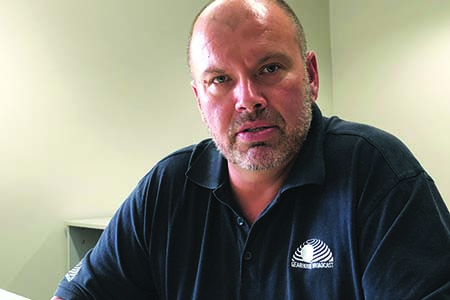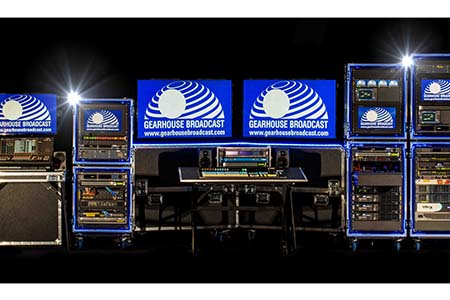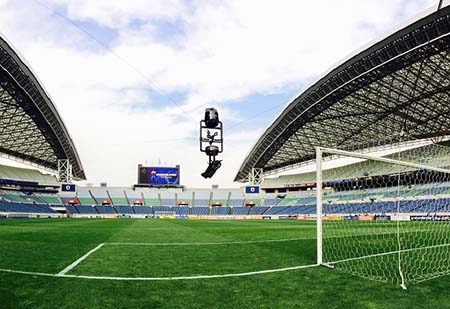Vijaya Cherian travelled to Melbourne to speak to the teams at Gearhouse Broadcast and Net Insight on how they facilitated remote production for rights holder, Seven Network.

When 35-year-old Roger Federer won the Australian Open, his first in five years, BroadcastPro ME had a ringside view of the remote production that moved an incredible 86 signals around Melbourne on a self-managed dark fibre. Vijaya Cherian travelled to Melbourne to speak to the teams at Gearhouse Broadcast and Net Insight on how they facilitated remote production for rights holder, Seven Network.
Every year, the stakes keep getting higher with live sport. Viewers want better quality and more choices, more perspectives on several different devices, and all the fanfare and social engagement that comes with a live event. While the demands for viewing live sport have gradually increased, shrinking budgets have compelled broadcasters to look at technological alternatives that offer more for less.
Also read: A visit to Sydney Teleport Services
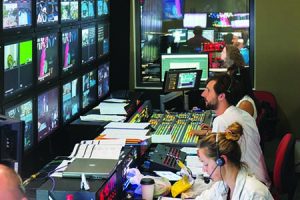 This is where remote production is being touted as the single biggest disruption that has changed the dynamics of producing live sport, promising to cut costs while offering a lot more flexibility to make available several different perspectives of a game for multiple platforms.
This is where remote production is being touted as the single biggest disruption that has changed the dynamics of producing live sport, promising to cut costs while offering a lot more flexibility to make available several different perspectives of a game for multiple platforms.
BroadcastPro Middle East had the exclusive opportunity to witness how remote production changed the game at the Australian Open tennis tournament last month for local broadcaster, Seven Network, the unilateral rights holder for the event, and its main technology partner, Gearhouse Broadcast.
Gearhouse had been Sevens primary technology partner in covering the Australian Open in previous years. Seven wanted to keep up with technology while maintaining the same quality, if not higher, of broadcast as it had in past years, and Gearhouse catered to this by bringing remote production to the table a solution that proved to be a win-win for both entities.
Seven Networks decision to go remote meant it needed only limited crew on-site. The rest were stationed offsite at a remote broadcast centre (RBC) that Gearhouse assembled at another location in Melbourne, where security, catering and other logistics were much simpler.
The cost of footprint at major events is very expensive, explains Ian Stokes, Broadcast Engineer at Gearhouse Broadcast Australia and one of the key people that oversaw the RBC deployment in Melbourne. Our mandate was to create the infrastructure that would enable the domestic broadcaster to match what they traditionally did on-site, while keeping costs down.
To put things in perspective, Seven Network, in addition to being the unilateral rights holder for the Australian Open, also holds the broadcast rights in Australia for the Winter Olympics, for which Gearhouse has provided a remote production facility. In previous years, a flyaway kit was stationed at Melbourne Olympic Park the main site of the action and all operational staff worked from there.
The RBC, by comparison, opened the doors for experimentation with more feeds and additional streams for OTT platforms. Remote production promised to remove the bottlenecks that are typical in a live production workflow and let the client deliver more live content with better quality for less.
We were operating between three sites Melbourne Olympic Park, the site of the action; Seven Networks Broadcast Centre Melbourne (BCM); and the remote broadcast centre, explains Stokes.
The Melbourne Olympic Park remote site is what we built the overarching architecture for. There were multiple feeds going back and forth between the different sites. We had more than 50 HD-SDI feeds leaving Melbourne Olympic Park, all with 16 channels of embedded audio, over 200 audio channels over eight MADI feeds, and eight data networks as well as a muxed 10G network. All these signals landed at the RBC, with the majority also landing at Seven’s BCM.
Additionally, there were 14 SDI paths out of the RBC landing at both Melbourne Olympic Park and BCM, and 12 SDI paths out of BCM landing at both of the other sites. All of the network signals were available at all three sites. Overall, there were around 86 SDI feeds between the three sites on the diverse fibre.
The sheer volume of feeds going between the three different centres across Melbourne needed to be managed efficiently, and this could not have been done without a third partner, someone who understood remote production well. This is where Net Insight entered the picture, with its Nimbra solution.
This also demonstrated to us that we are now no longer limited to using the same transportation technologies we have used previously. This has opened up the doors for us to also use self-managed dark fibre Gavin Romanis, Business Development Director, Gearhouse Broadcast
With Net Insight as a partner, we created the first operational remote broadcast centre in Australia for an event that exceeds all other events by feed count done annually, explains Gavin Romanis, Business Development Director at Gearhouse Broadcast Australia, who pitched remote production to Seven.
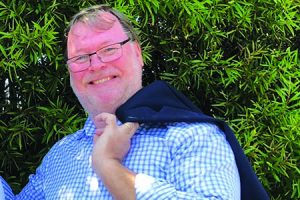
We had done a proof of concept with Net Insight and Techtel, their local distributor, previously. When this partnership came about, we specified our needs to them, and they worked out how to get those amount of feeds down a very small amount of fibre using JPEG2000 (J2K), Ethernet tunnels, uncompressed, MADI and so on.
Gearhouse can provide a solution for outside broadcast, but we are not a telco and do not traditionally do telco interconnects. But with the Net Insight and Techtel partnership, we knew they had the backbone. Essentially, we do the OBs and they do the fibre infrastructure. We are also the first non-telco in the broadcast domain to self-manage a dark fibre that was leased as a per-event use. The achievement was the process of moving 86 signals around Melbourne on a self-managed dark fibre.
As a result, Net Insights Nimbra 688 modular platform was deployed across the various sites. This multiservice networking platform enables real-time media transport over standard telecoms infrastructure. Its multi-service capabilities enable the bi-directional transport of SDSDI, HD-SDI and 4K Ultra HD video formats, as well as IP data and native audio in a one-box solution.
The critical thing about J2K is that it gives you that perfect level of compression with only a two-frame latency. In essence, it touches that sweet spot between two-frames latency and 90% compression Olle Waktel, VP Sales, Net Insight
IP connectivity is used for equipment control, while audio production can be facilitated regardless of whether the audio production workflow requires discrete or embedded audio. Bidirectional video is required in remote production to backhaul the produced feed to the venue for monitoring. Data links can be set up between the broadcast facility and the remote venue to support remote equipment control, including camera control, audio control and tally.
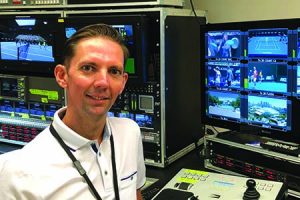
Nimbra addresses the three most significant challenges, crucial in any remote production environment: latency, bandwidth efficiency and synchronicity. The solution uses J2K compression to provide highquality compression with low latency. An HD-SDI feed can typically be compressed down to between 120 and 150Mbps without any visual impairment, while maintaining end-to-end latency within the requirements set for remote production.
Showcasing the benefit of the solution, Olle Waktel, VP Sales Net Insight, says the J2K compression reduces bandwidth by 90%.
The critical thing about J2K is that it gives you that perfect level of compression with only a two-frame latency. In essence, it touches that sweet spot between two-frames latency and 90% compression. With uncompressed files, you may get even lower latency but you consume ten times the bandwidth and its economically not justifiable.
The Melbourne Olympic Park remote site is what we built the overarching architecture for … We had more than 50 HD-SDI feeds leaving Melbourne Olympic Park all with 16 channels of embedded audio, over 200 audio channels over eight MADI feeds, and eight data networks as well as a muxed 10G network Ian Stokes, Broadcast Engineer, Gearhouse Broadcast Australia
Using the built-in J2K codec means broadcasters dont just save on bandwidth costs but can bring in more camera feeds from the venue. Because it sustains video quality, even after multiple encoding/decoding iterations, J2K distinguishes itself from other compression technologies such as MPEG-4. This makes the technology well-suited for production.
One of the big challenges Gearhouse faced was synchronisation, explains Stokes.
We used a mix of J2K and uncompressed encoding. We needed to factor in that the host broadcaster was running plain cameras, virtual cameras, clean feeds, dirty feeds and virtual feeds, and all of them had a different timing associated with them. We worked to use delay within our system to bring the audio in at the front end of the system, to ensure it filtered in correctly.
Here, Waktel steps in to add that Nimbra provides a reliable synchronous transport, so all signals go through the system just like they are all in their own private fibre. So there is no conflict between the signals, no overloading and no packet loss. You get exactly the same low latency for all signals. It is a super reliable low-latency solution.
He adds that the 20-year-old company has been built on the Nimbra platform.
The solution has evolved over the years. Two of the biggest concerns customers have had are bandwidth and latency, and this solution has addressed both successfully.
Nimbra transports all media services completely synchronised, even over packet-based infrastructures, meaning all audio and video feeds were in perfect sync, even as feeds traversed different paths over the network. Nimbra does this by putting a timestamp on each video frame that leaves the venue. At the destination, this enables Nimbra to play out each video feed in perfect frame alignment and facilitates clean switching in the studio facility of both video and embedded audio.
To avoid frame slips or repeats, as well as maintain the lowest possible end-to-end delay, the solution can also be used to extend the studio clock domain to the equipment at the remote venue. Any video interface on the remote Nimbra equipment can be used to output a genlock signal that operates off the central studio clock.
Net Insight says data transport over Nimbra has the same quality of service properties as live video transport. This enables broadcasters to use the solution to extending office telecoms, VoIP and other office applications to the remote venue. I think this event provided us with an opportunity to demonstrate to the market that we could be the first to deliver a remote solution of this scale in Australia, explains Romanis.
Arguably, the Australian Open is the most significant annual event over the most prolonged period of time that happens in the Australian sporting calendar, involving 86 signals coming from BCM, RBC and Melbourne Olympic Park, all on a diversified fibre. For us to do that required a partner that was robust enough to do this.
This also demonstrated to us that we are now no longer limited to using the same transportation technologies we have used previously. This has opened up the doors for us to also use self-managed dark fibre.
Traditionally, on a standard OB in Australia, we would either use a digital video network (DVN) supplied by Telstra to get from point-to-point or microwave links. But this time, we rented a dark fibre from VOCAS, who kindly partnered with us for a proof of concept and then we took on the self-management of that fibre.
But the remote production still wouldnt have happened without the support of Net Insight and Techtel. Nimbra served as the product that was effectively the bridge between remote production working and not working. We had the dark fibre and we had all the facility here, but we had no way of putting the signals onto the fibre without Nimbra. This essentially made the project a viable option.
Romanis is clear that the main reason people want to go remote is because they are enticed by the savings they could potentially realise.
However, he cautions that those savings are only viable if you have a transmission path whether it is fibre, dark fibre or DPN, that makes it cost-effective.
As soon as your transmission path increases in pricing, it negates any savings you would have made by not flying in staff, and that is a big challenge. With this project, we have not only proved that we can handle remote production, but we are identifying to the market that there are alternative ways of producing live sport successfully if existing production equipment and technology are supported.–
A visit to Sydney Teleport Services
Unlike the GCC, where most teleports are owned by large government entities or telcos, private teleport facilities seem to be the norm in other countries. BroadcastPro ME had the opportunity to visit Sydney Teleport Services, a privately owned small-to-medium business operation in Sydney, which has provided broadcast services for several sports events in recent months including beach volleyball, water sports, yachting and surfing.
Owned and managed by Scott Jenkins and Marrianne Skinner, Sydney Teleport uses Nimbra extensively for data, audio and video signal transport. The Nimbra MSR network deployed at the facility creates a reliable long distance network, via intercontinental diverse layer three IP links. The current Nimbra network enables on-demand transport of video and layer two Ethernet services between the US, the UK, New Zealand and Sydney.
We serve as a courier company for signals; we pick up the signals for venues of POPs overseas or take them from here and send them overseas. With Nimbra, we have been able to move our channels around locally in JPEG 2000 or overseas, and they can be moved at ASI or Ethernet level, explains Jenkins. “When we first kicked off, we were more of a satellite teleport. But now, we tend to have more fibre available because it has become more cost-effective. Satellite is also becoming more cost-effective, so we have a blend of the two, and Australia is in the unique position of being in the Pacific so we have good connectivity between the US, Europe and Asia.
Jenkins also clarifies that the company prefers tried and tested equipment that has become standard in the industry, rather than newer technologies that are still finding their feet.
In the broadcast world, we want to be protected and we needed reliable signals around the world. One of the reasons we have chosen Nimbra is because the solution is very reliable. It brings a lot of functionality that is specifically built for broadcast operations, and it has been able to provide us with the tools to connect from point A to point B.
